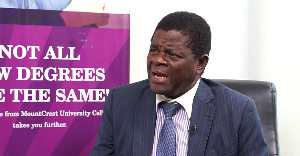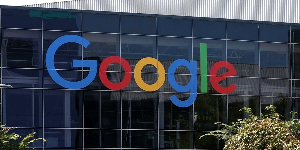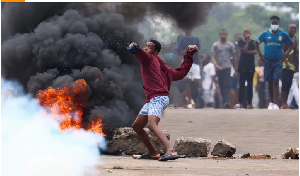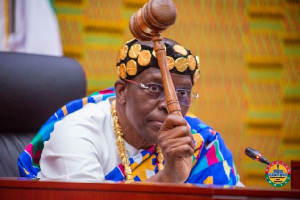By Samuel Kwasi Obeng
www.mrsamko.blogspot.com
My recent experience of a festival in Ghana was the Akwasidae festival of the Ashantis on July 5 of this year. Before the festival on the Sunday, I was privileged to explore some tourist sites, history and the artistic creativity of the Ashanti nation in the Ashanti Region with some foreign diplomats. I must say I was filled with awe and an overwhelming reverence for the Ashanti nation.
The tourist sites were a site to behold. The rich and well preserved tangible and intangible historical heritage held me spell bound. And so was the artistic creativity of the people.
The Akwasidae festival was the icing on the cake. It was the main reason why Golden Tulip, Kumasi, in collaboration with the Ministry of Tourism, Culture and Creative Arts (MOTCCA) led the foreign diplomats to Kumasi. And I am confident that they did not regret the experience.
I noticed that the chiefs of the various paramountcies, including those outside the Ashanti Region, had come to the Manhyia Palace to reaffirm their allegiance to the golden stool and its occupier, Otumfuo Osei Tutu II, the Asantehene. This was symbolic of the unity among the people. And it was very refreshing and exciting, seeing the oneness of purpose and character, being demonstrated through culture and tradition.
I shared the experience with my good friend, Akwesi, on WhatsApp, and he responded with his witty questions as usual.
“Could this experience be replicated in Ghana’s regional capital?” he asked
I retorted, “What do you mean?”
“Can we have one big traditional festival for the Ga-Dangbe community in the Greater Accra Region?” he asked again.
Quickly, I remembered I haven’t spoken to Akwesi about Homofest. So I asked him if he knows about the festival dubbed Homofest. ‘The Homowo festival?’ he remarked with some confidence and I could feel it.
It became obvious to me at this point that my good friend didn’t know about the festival. So I had to educate him on it, which he very much appreciated.
Homofest is a coinage which literally means “homogenous festival”. It was birthed by the government of Ghana for the Ga-Dangbes and placed under the mandate of the Ministry of Tourism, Culture and Creative Arts (MOTCCA). The aim of the festival is to bring the Ga-Dangbe community in the Greater Accra Region to a common platform to showcase their rich and diverse culture, and to unite them for communal development. This is well summarised in the theme of the festival, “Unity and Development” which has been the only theme since its inception last year.
Also, the festival is a gesture of appreciation from the government of Ghana to the Ga-Dangbe community for making their land and other resources available for national projects. This gesture is in the right place because our quest to develop Accra to befit the status of a modern capital city has been at the expense of the culture of its custodians, the Ga-Dangbes.
Last Saturday’s (September 26) ‘The Spectator’ newspaper captured a story wherein a former mayor of Accra, Nat Nunoo Amarteifio, was urging art writers and critics to wage a media war against the wanton demolition of old architectural colonial heritage for high-rise buildings in Accra. He argued that these old buildings embody the heritage of the city and ought to be preserved for posterity.
Even though I disagree with his submissions on a whole, I think we ought to find a proper balance between maintaining and making visible, especially in Greater Accra, the core of the culture of the Ga-Dangbes and our quest to modernise the city. This has been done so well in Kumasi and I believe it can be done in Accra too. Because as it stands now, the Ga-Dangbe culture remains confined to the fringes of the city and this is not healthy for their identity and what it represents.
So for government to express appreciation to them in way that will help bring their culture and traditions to the fore, so that once you touch down in the Greater Accra Region, you could see and feel the Ga-Dangbe culture, is worth commendable.
During the launch of Homofest 2015 by the Hon. Minister for Tourism, Culture and Creative Arts, Mrs. Elizabeth Ofosu-Adjare on July 17 this year, she tacitly answered one of Akwesi’s prayers, even though she was not privy to what we had discussed. She said her ministry will promote Homofest as one of the flagship events to influence visitor’s decision to Accra.
In fact, i was happy to hear that and I prayed for grace to help manifest this dream. I hope you said Amen to my prayer? Well, I’m sure Akwesi did wherever he is reading this piece.
Various activities have been lined up for this year’s Homofest which begins on October 2. There will be clean-up exercises from October 2 to 4; a float on the 5th, a colloquium on the 7th and an exhibition which start from October 8 to 10. Friday, October 9 is fun galore. There will cooking competition, food bazaar and Miss Homofest on the same day. All these activities will be crowned with a grand durbar of the chiefs and the people at the Efua Sutherland Chidren’s Park on Saturday October 10. And you can’t afford to miss any of the activities.
The Ashantis are great because of their unifying culture which they live, and can be seen and felt when you arrive in Kumasi. However, the culture of the Ga-Dangbes, custodians of the land which habours Ghana’s regional capital, has been confined to the fringes of Chorkor, Labadi and Nungua among others.
This is not a desirable situation. Hopefully, Homofest will unite the Ga-Dangbes, showcase their rich and diverse culture to the world, and most importantly, bring to the fore their culture in the Greater Accra Region.
Opinions of Thursday, 1 October 2015
Columnist: Obeng, Samuel Kwasi


















